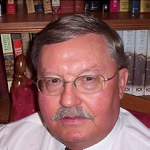The Death of Detroit – How Do the Fragile Pull Back from the Brink?
 Resilient Communities are the Foundations of a Resilient America
Resilient Communities are the Foundations of a Resilient America
by John Plodinec, Firestorm Expert Council Member, Associate Director for Resilience Technologies at CARRI
“Resilience is the ability to anticipate risk, limit impact, and bounce back rapidly in the face of turbulent change.”
In the previous posts in this series, I spotlighted three communities that I believe are particularly fragile – Cape Coral, FL; Flint, MI; and Gary, IN. While each of these has its own characteristics and set of problems, there are some common threads that should apply to any community in distress. And please note – this is how the community can pull back from the brink, not how we assist them.
- Recognize there are no quick fixes. The problems grew – sometimes unobserved – over decades and likely will take decades to solve. Cape Coral grew in spite of malign neglect from Lee County (in which it sits) over several decades, but with a tax base almost entirely built on property taxes. Gary and Flint were industrial towns that were highly dependent on the auto industry. Its strength had been waning for decades but little action was taken. So it’s going to take a while to fix problems decades in the making.
- Recognize that government doesn’t have all the answers… In Flint (as in Detroit), municipal government appears to have tried to solve the city’s problems on its own. Too often, this means that a specific approach will be tried until a change in elected leadership, and then the first is abandoned and a new one tried. The result is a path to nowhere. In Cape Coral, the divisive bickering between the city and Lee County has prevented much progress from being made. In Gary, the city seems to have taken a reasonable path, but state government has hindered success.
- …but can play a big role in asking the right questions. The most important of these are “What do we want our community to be? Where are we going now? How do we get to where we want to be?” Government shouldn’t try to answer those questions on its own. But in its role as the Great Convener government can help the community to forge its own answers. Gary actually has mapped out an interesting approach – not necessarily intuitive – to make itself a “destination.” It is trying to use its strengths – its proximity to Chicago and its airport – as leverage to make this happen. The approach was hammered out by the community – brought together by city government – to develop and implement a vision for the city: “What do we want Gary to be in a post-industrial world?”
- Get everyone moving in the same direction. As I’ve pointed out elsewhere, a resilient city is one that is well-connected. Government, business, non-profits, residents and any other stakeholders all need to agree on the desired end state – what they want the community to be (It appears that Gary attempted to do this, but the state either was left out or otherwise welshed on the deal.). Otherwise, their actions in different directions will cancel each other out.
- Take small steps that are likely to succeed. In this realm, a great leap forward will actually be the result of ever surer small steps. A series of small victories can help a community become more confident, and that confidence can lead to greater daring and success.
Nothing very startling, but then community resilience isn’t all that flashy either. Unless your community is so fragile that it can be easily pushed over the edge.
Learn more about the Community & Regional Resilience Institute

 “What should we do now?” “What should we say?”
“What should we do now?” “What should we say?”